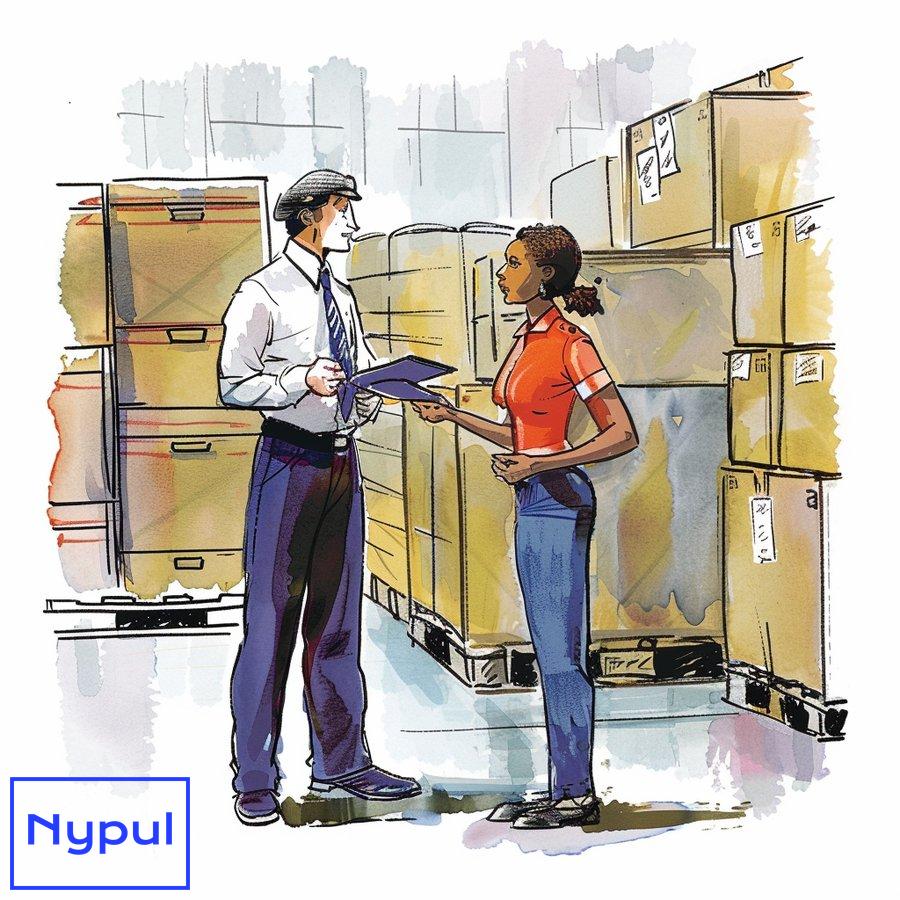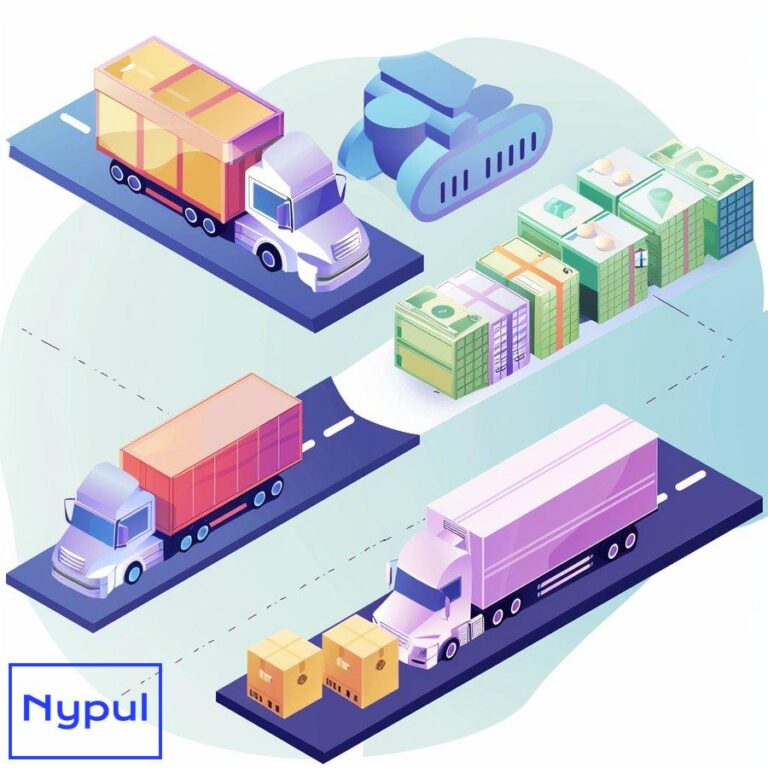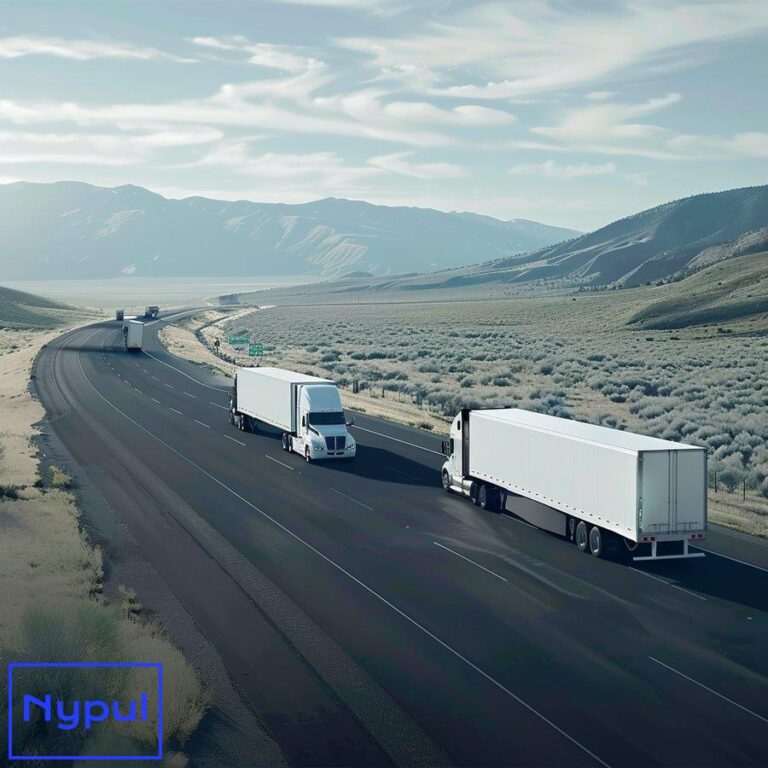How Long Can Customs Hold a Shipment
What is a customs hold and why does it occur?
Customs holds are a critical aspect of international trade and border security. When a shipment arrives at a port of entry, customs authorities may decide to detain it for various reasons. This process, known as a customs hold, involves the temporary detention of goods for inspection, verification, or compliance checks.
Customs holds serve multiple purposes in the complex world of international commerce and national security:
![]()
Regulatory Compliance: Customs authorities enforce a wide array of regulations governing the import and export of goods. These regulations cover areas such as product safety, environmental protection, and intellectual property rights. A customs hold allows officials to verify that incoming shipments comply with these rules.
Security Measures: In an era of global security concerns, customs holds play a crucial role in preventing the entry of prohibited or dangerous items. This includes weapons, drugs, and other contraband that could pose threats to national security or public safety.
Revenue Collection: Customs agencies are responsible for collecting duties and taxes on imported goods. Holds enable officials to assess the value of shipments accurately and ensure proper payment of all applicable fees.
Documentation Verification: International shipments require extensive paperwork, including commercial invoices, packing lists, and certificates of origin. Customs holds provide an opportunity for authorities to review these documents thoroughly and confirm their authenticity.
Trade Agreement Enforcement: Many countries have bilateral or multilateral trade agreements that dictate preferential treatment for certain goods. Customs holds allow for the verification of a shipment’s eligibility for these benefits.
The occurrence of a customs hold can be triggered by various factors:
Random Inspections: Customs agencies often employ random selection processes to maintain the integrity of their screening procedures. Even compliant shippers may occasionally face holds due to these random checks.
Risk Assessment: Advanced data analysis and intelligence gathering help customs authorities identify high-risk shipments. Factors such as the shipper’s history, the nature of the goods, and the country of origin can influence risk assessments.
Incomplete or Inconsistent Documentation: Discrepancies in shipping documents or missing information can prompt customs officials to place a hold on a shipment for further investigation.
Prohibited or Restricted Items: Attempts to import goods that are either banned or subject to special restrictions will invariably lead to customs holds.
Quota Limitations: Some products are subject to import quotas. When these quotas are reached, customs may hold shipments until the next quota period begins.
Intellectual Property Concerns: Suspicion of counterfeit goods or trademark violations can result in customs holds to protect intellectual property rights.
Understanding the nature and causes of customs holds is essential for businesses engaged in international trade. By recognizing the reasons behind these holds, shippers can take proactive measures to minimize delays and ensure smoother customs clearance processes.
How long do typical customs holds last?
The duration of a customs hold can vary significantly depending on numerous factors. While some shipments may clear customs within hours, others might be held for days or even weeks. Understanding the typical timeframes for customs holds can help businesses plan their supply chains more effectively and set realistic expectations for their customers.
Standard Processing Times
Under normal circumstances, most customs agencies aim to process shipments as quickly as possible to facilitate trade. The standard processing times for different types of customs holds are as follows:
Document Review: 1-3 business days
This involves a thorough examination of all accompanying paperwork, including commercial invoices, bills of lading, and certificates of origin.
Physical Inspection: 3-5 business days
When customs officials decide to inspect the contents of a shipment physically, the process typically takes longer due to the need for scheduling, unpacking, and potentially testing the goods.
Laboratory Analysis: 7-14 business days
If there are concerns about the composition or safety of certain products, samples may be sent to a laboratory for testing, which can extend the hold period significantly.
Special Permit Requirements: 5-10 business days
Some goods require special permits or licenses, and the verification of these documents can add to the processing time.
It’s important to note that these timeframes are general estimates and can vary based on the specific customs agency, port of entry, and current workload.
Factors Affecting Hold Duration
Several factors can influence how long a customs hold lasts:
Complexity of the Shipment: Large shipments with diverse products or those requiring special handling may take longer to process.
Completeness of Documentation: Well-prepared and accurate documentation can expedite the clearance process, while incomplete or inconsistent paperwork can lead to extended holds.
Type of Goods: Certain categories of products, such as food items, pharmaceuticals, or high-tech equipment, may be subject to more rigorous inspections and longer hold times.
Customs Workload: During peak shipping seasons or in the aftermath of disruptions (such as natural disasters or labor strikes), customs agencies may experience backlogs that extend processing times.
Compliance History: Importers with a history of compliance issues may face more scrutiny and potentially longer hold times.
Country-Specific Variations
Customs processing times can vary significantly from one country to another. Here’s a comparison of average customs clearance times for selected countries:
| Country | Average Clearance Time |
|---|---|
| Singapore | 1-2 days |
| United States | 3-5 days |
| Germany | 2-3 days |
| China | 4-7 days |
| Brazil | 7-10 days |
These figures represent typical scenarios and can fluctuate based on the factors mentioned earlier.
Communication and Transparency
Many customs agencies now provide online tracking systems that allow importers and their agents to monitor the status of their shipments. These systems can offer real-time updates on hold status and estimated release times, helping businesses manage their supply chains more effectively.
Expedited Processing Options
Some countries offer expedited customs clearance programs for pre-approved, low-risk shippers. For example:
C-TPAT (United States): Certified importers can benefit from reduced inspection rates and faster processing times.
AEO (European Union): Authorized Economic Operators enjoy simplified customs procedures and priority treatment.
While these programs can significantly reduce hold times, they require extensive vetting and ongoing compliance commitments from participating companies.
Understanding the typical duration of customs holds is crucial for businesses engaged in international trade. By factoring in these timeframes and potential variables, companies can better manage their inventory, set realistic delivery expectations, and develop contingency plans to mitigate the impact of customs-related delays on their operations.
What are the legal time limits for customs holds?

The legal time limits for customs holds vary by country and are governed by a combination of national laws, international agreements, and customs regulations. These time limits serve to balance the need for thorough inspections with the importance of facilitating efficient trade. Understanding these legal boundaries is crucial for importers and exporters to protect their rights and manage their shipments effectively.
General Principles
While specific time limits differ, most countries adhere to certain general principles regarding customs holds:
Reasonable Duration: Customs authorities are typically required to complete their inspections and release goods within a “reasonable” timeframe.
Notification Requirements: Many jurisdictions mandate that customs officials inform the importer or their agent about the reason for a hold and provide updates on its status.
Right to Appeal: Importers usually have the right to appeal extended holds or request expedited processing in certain circumstances.
Country-Specific Time Limits
Let’s examine the legal time limits for customs holds in several major trading nations:
United States
The U.S. Customs and Border Protection (CBP) operates under the following guidelines:
Initial Hold: No specific time limit, but CBP aims to process most shipments within 5 business days.
Extended Hold: If a hold exceeds 15 calendar days, CBP must provide written notice to the importer explaining the reason for the delay.
Maximum Duration: While there is no absolute maximum, holds lasting more than 30 days are subject to additional scrutiny and may require supervisor approval.
European Union
The EU’s Union Customs Code (UCC) establishes the following timeframes:
Standard Release: Customs authorities should release goods within 1 working day of acceptance of the customs declaration, provided all requirements are met.
Physical Inspection: If an inspection is required, it should be completed as quickly as possible, typically within 3 working days of the goods’ presentation to customs.
Extended Hold: For complex cases, the inspection period can be extended, but customs must inform the declarant of the reasons and expected duration.
China
China’s customs regulations provide the following guidelines:
Initial Processing: Customs should complete the examination and verification of declaration documents within 24 hours of acceptance.
Physical Inspection: If a physical inspection is necessary, it should be conducted within 48 hours of the decision to inspect.
Extended Hold: For cases requiring further investigation, customs may extend the hold period but must notify the importer of the reasons and expected timeframe.
Canada
The Canada Border Services Agency (CBSA) operates under these time limits:
Initial Assessment: CBSA aims to process most shipments within 24 hours of arrival.
Secondary Inspection: If further examination is required, CBSA should complete it within 5 business days.
Extended Hold: For complex cases, CBSA may extend the hold period but must provide regular updates to the importer.
International Agreements
Several international agreements influence customs hold time limits:
World Trade Organization (WTO) Trade Facilitation Agreement
This agreement, ratified by numerous countries, includes provisions to expedite the movement, release, and clearance of goods. Key points include:
Prompt Release: Members shall adopt or maintain procedures allowing for the release of goods prior to final determination of customs duties, taxes, fees, and charges.
Time Limits: Each member shall publish information on the average release time of goods.
Kyoto Convention
The International Convention on the Simplification and Harmonization of Customs Procedures (Kyoto Convention) provides guidelines for efficient customs procedures:
Prompt Clearance: Customs shall release goods as soon as they have examined them or decided not to examine them, provided that no offense has been found and all clearance requirements have been met.
Time Limits: The Convention encourages members to establish and publish maximum periods between the lodging of the goods declaration and their release.
Exceptions and Special Circumstances
It’s important to note that legal time limits for customs holds may be extended in certain situations:
National Security Concerns: Shipments suspected of posing security risks may be subject to indefinite holds pending investigation.
Judicial Proceedings: If a shipment becomes part of a legal investigation or court case, standard time limits may not apply.
Force Majeure: Natural disasters, strikes, or other unforeseen events may lead to extended hold periods beyond normal legal limits.
Understanding the legal time limits for customs holds is essential for businesses engaged in international trade. These limits provide a framework for expectations and recourse in cases of excessive delays. However, it’s crucial to remember that while these limits exist, customs authorities retain significant discretion in applying them, particularly when dealing with complex or high-risk shipments. Importers and exporters should familiarize themselves with the specific regulations of the countries they trade with and be prepared to engage proactively with customs officials to resolve any issues that may arise during the clearance process.
Which factors influence the duration of a customs hold?
The duration of a customs hold is influenced by a complex interplay of various factors. Understanding these elements can help businesses anticipate potential delays and take proactive measures to expedite the clearance process. Let’s explore the key factors that can affect how long a shipment remains in customs custody.
Nature of the Goods
The type of products being imported plays a significant role in determining the length of a customs hold:
Regulated Items: Goods subject to special regulations, such as pharmaceuticals, food products, or chemicals, often require additional inspections and documentation, leading to longer hold times.
High-Value Merchandise: Luxury goods or high-value technology products may undergo more scrutiny to verify their authenticity and assess proper valuation for duty purposes.
Perishable Goods: While perishables are typically processed quickly to prevent spoilage, they may face additional health and safety inspections that can extend hold times.
Documentation and Compliance
The quality and completeness of shipping documentation significantly impact customs processing times:
Accuracy of Paperwork: Errors or inconsistencies in commercial invoices, packing lists, or certificates of origin can lead to extended holds while customs officials seek clarification.
Compliance with Regulations: Shipments that fully comply with import regulations and provide all required permits and licenses are more likely to be processed quickly.
Prior Compliance History: Importers with a track record of compliance may benefit from expedited processing, while those with previous violations may face more rigorous inspections.
Customs Workload and Resources
The operational capacity of customs agencies can affect hold durations:
Seasonal Fluctuations: During peak shipping seasons, such as holidays, customs agencies may experience backlogs that extend processing times.
Staffing Levels: The availability of customs personnel to conduct inspections and process paperwork impacts clearance speed.
Technological Infrastructure: Advanced customs management systems can expedite processing, while outdated technology may lead to delays.
Security and Risk Assessment
Customs authorities employ risk management strategies that can influence hold durations:
Country of Origin: Shipments from countries deemed high-risk may undergo more intensive scrutiny.
Shipper and Consignee Profiles: The reputation and compliance history of both the sender and receiver can affect the level of inspection required.
Intelligence Information: Customs agencies may prioritize or extend holds based on specific intelligence about potential threats or smuggling attempts.
Special Trade Programs and Agreements
Participation in customs facilitation programs can significantly impact hold times:
Trusted Trader Programs: Initiatives like the U.S. Customs-Trade Partnership Against Terrorism (C-TPAT) or the EU’s Authorized Economic Operator (AEO) program can lead to reduced inspection rates and faster processing.
Free Trade Agreements: Goods eligible for preferential treatment under trade agreements may require additional verification, potentially extending hold times.
Port of Entry Characteristics
The specific port where goods enter a country can affect customs hold durations:
Port Specialization: Some ports are better equipped to handle certain types of cargo, potentially leading to faster processing for those goods.
Geographic Location: Ports in remote areas may have limited resources, potentially resulting in longer hold times.
Local Regulations: Individual ports may have unique procedures or requirements that can impact processing times.
External Factors
Various external circumstances can influence customs hold durations:
Natural Disasters: Extreme weather events or natural disasters can disrupt customs operations and extend hold times.
Political Events: Changes in trade policies, international tensions, or government shutdowns can affect customs processing.
Global Health Crises: Pandemics or other health emergencies may necessitate additional inspections or alter customs procedures.
To illustrate the impact of these factors, consider the following comparison of average customs hold times for different scenarios:
| Scenario | Average Hold Time |
|---|---|
| Standard commercial shipment | 3-5 days |
| Shipment with incomplete documentation | 7-10 days |
| High-risk country of origin | 5-7 days |
| Trusted trader program participant | 1-2 days |
| Regulated goods (e.g., pharmaceuticals) | 7-14 days |
| Peak season shipment | 5-8 days |
| Shipment requiring laboratory testing | 14-21 days |
These figures are approximate and can vary based on the specific circumstances of each shipment and the customs agency involved.
Strategies for Mitigating Hold Durations
While many factors influencing customs holds are beyond an importer’s direct control, there are strategies that can help minimize delays:
Thorough Documentation: Ensuring all required paperwork is complete, accurate, and easily accessible can significantly reduce hold times.
Advance Filing: Submitting customs documentation before the shipment arrives allows for pre-clearance processing in many cases.
Customs Broker Expertise: Engaging experienced customs brokers who are familiar with local regulations and procedures can help navigate complex clearance processes.
Regular Compliance Audits: Conducting internal audits to ensure ongoing compliance with customs regulations can prevent issues that lead to extended holds.
Technology Integration: Utilizing electronic data interchange (EDI) and other digital tools to communicate with customs agencies can streamline the clearance process.
Understanding the multitude of factors that influence customs hold durations is crucial for businesses engaged in international trade. By recognizing these elements and implementing strategies to address them proactively, companies can work to minimize delays, reduce costs associated with extended holds,and enhance their overall supply chain efficiency.
How can you expedite customs clearance?
Expediting customs clearance is essential for businesses aiming to minimize delays and maintain efficient supply chains. By understanding the processes involved and implementing strategic measures, importers can significantly reduce the time their shipments spend in customs. Here are several effective strategies to expedite customs clearance:
Pre-Arrival Documentation
Submitting complete and accurate documentation before the arrival of goods can streamline the customs process:
-
Electronic Filing: Utilize electronic data interchange (EDI) systems to submit customs declarations and required documents in advance. This allows customs authorities to review paperwork before the shipment arrives.
-
Complete Paperwork: Ensure all necessary documents, such as commercial invoices, packing lists, and certificates of origin, are accurate and complete. Incomplete or incorrect documentation is a common cause of delays.
-
Advance Rulings: Seek advance rulings from customs authorities regarding classification, valuation, or origin of goods. This proactive step can prevent disputes at the time of clearance.
Engage a Customs Broker
Customs brokers play a crucial role in facilitating smooth customs processes:
-
Expert Guidance: Hire a knowledgeable customs broker who understands local regulations and can navigate complex procedures on your behalf.
-
Timely Communication: A good broker will maintain open lines of communication with customs authorities, ensuring that any issues are addressed promptly.
-
Compliance Monitoring: Brokers can help ensure that your shipments comply with all relevant regulations, reducing the likelihood of holds.
Utilize Trusted Trader Programs
Participating in trusted trader programs can significantly enhance your shipment’s processing speed:
-
C-TPAT (Customs-Trade Partnership Against Terrorism): This U.S. program allows certified importers to benefit from reduced inspections and expedited processing.
-
AEO (Authorized Economic Operator): Similar to C-TPAT, this EU program offers benefits such as simplified procedures and priority treatment for compliant businesses.
-
Regular Audits: Maintain compliance with program requirements through regular internal audits to ensure ongoing eligibility for expedited processing.
Implement Risk Management Strategies
Understanding risk factors associated with your shipments can help mitigate delays:
-
Country of Origin Assessment: Be aware of the risk profiles associated with different countries. Shipments from high-risk areas may face more scrutiny.
-
Supplier Compliance: Work closely with suppliers to ensure they understand and adhere to documentation and compliance requirements. This reduces the risk of issues arising during customs clearance.
-
Shipping Method Selection: Choose shipping methods that align with your urgency needs. Air freight may offer faster transit times compared to ocean freight, but it often comes at a higher cost.
Leverage Technology
Technology can significantly enhance efficiency in customs processes:
-
Customs Management Software: Invest in software solutions that facilitate electronic filing, track shipments, and manage compliance documentation effectively.
-
Real-Time Tracking Systems: Utilize tracking systems that provide real-time updates on shipment status, allowing you to anticipate potential delays and respond proactively.
-
Automated Alerts: Set up automated alerts for critical milestones in the shipping process, ensuring timely responses to any issues that may arise.
Maintain Good Relationships with Customs Authorities
Building strong relationships with customs officials can lead to smoother clearance processes:
-
Open Communication Channels: Establish clear lines of communication with customs authorities. Being proactive in addressing concerns can help resolve issues quickly.
-
Regular Engagement: Attend workshops or seminars hosted by customs agencies to stay informed about changes in regulations and best practices for compliance.
-
Feedback Mechanisms: Provide feedback on customs processes to authorities when appropriate. This collaborative approach fosters goodwill and may lead to more favorable treatment for your shipments.
By implementing these strategies, businesses can effectively expedite customs clearance, minimizing delays and enhancing overall supply chain efficiency. Understanding the importance of proactive measures will empower importers to navigate the complexities of international trade successfully.
What are the financial implications of extended customs holds?
Extended customs holds can have significant financial implications for businesses engaged in international trade. Delays in clearing goods through customs not only impact operational efficiency but also lead to various costs that can accumulate quickly. Understanding these financial implications is crucial for businesses seeking to mitigate risks associated with extended holds.
Direct Costs
Extended holds result in several direct costs that businesses must consider:
-
Demurrage Fees: When containers are held at ports beyond the free time allowed by shipping lines, demurrage fees accrue daily. These charges can escalate quickly, impacting overall shipping costs.
-
Storage Fees: If goods remain at a warehouse or port facility longer than anticipated due to customs holds, storage fees may apply. These fees vary by location and facility but can add substantial costs over time.
-
Increased Shipping Costs: Delays may necessitate expedited shipping options for subsequent orders or replacements, leading to higher transportation costs than originally planned.
Indirect Costs
The indirect costs associated with extended customs holds can be equally detrimental:
-
Lost Sales Opportunities: Delays in receiving goods can lead to missed sales opportunities if inventory levels cannot meet customer demand. This is particularly critical for seasonal products or time-sensitive goods.
-
Customer Dissatisfaction: Prolonged delays may result in dissatisfied customers who experience longer wait times for their orders. This dissatisfaction can damage brand reputation and lead to lost business in the future.
-
Operational Disruptions: Extended holds disrupt supply chain operations, leading to inefficiencies in production schedules or fulfillment processes. These disruptions may necessitate overtime labor or additional resources to address backlogs once goods are released.
Impact on Cash Flow
Extended holds have a direct impact on cash flow management:
-
Tied-Up Capital: Funds tied up in delayed shipments cannot be utilized for other operational needs or investments. This limitation on liquidity may hinder business growth opportunities.
-
Increased Financing Costs: Businesses relying on credit lines or loans may incur higher financing costs due to delayed cash inflows from sales tied to held shipments.
To illustrate the potential financial impact of extended holds, consider a hypothetical scenario involving a company importing electronics:
| Factor | Cost Implication |
|---|---|
| Demurrage Fees | $100 per day |
| Storage Fees | $50 per day |
| Lost Sales Opportunities | $10,000 per week |
| Increased Shipping Costs | $1,500 per expedited shipment |
| Total Cost (after 2 weeks hold) | $10,000 (demurrage) + $700 (storage) + $20,000 (lost sales) + $3,000 (expedited shipping) = $33,700 |
In this scenario, an extended hold lasting two weeks could lead to total costs exceeding $33,000—an amount that could significantly impact a company’s bottom line.
How should you communicate with customs during a hold?
Effective communication with customs authorities during a hold is essential for resolving issues promptly and minimizing delays. Establishing clear lines of communication ensures that importers are informed about the status of their shipments and any actions required on their part. Here are key strategies for communicating effectively with customs during a hold:
Be Proactive

Taking initiative in communication demonstrates professionalism and commitment:
-
Contact Customs Early: As soon as you become aware of a hold on your shipment, reach out to customs officials immediately. Prompt communication shows your willingness to cooperate and resolve any issues quickly.
-
Gather Relevant Information: Before contacting customs, gather all pertinent information related to your shipment—tracking numbers, invoices, and any previous correspondence—to facilitate efficient discussions.
Use Clear and Concise Language
When communicating with customs officials, clarity is paramount:
-
Be Specific About Issues: Clearly articulate the nature of the hold and any specific concerns you have regarding documentation or inspection requirements.
-
Avoid Jargon or Ambiguity: Use straightforward language without technical jargon that may confuse officials. Being clear about your needs helps expedite resolution efforts.
Follow Up Regularly
Maintaining regular contact keeps you informed about developments related to your shipment:
-
Set Reminders for Follow-Ups: If you haven’t received updates within a reasonable timeframe after your initial inquiry, set reminders to follow up with customs officials regularly until the issue is resolved.
-
Document All Communications: Keep records of all correspondence with customs authorities—including dates, names of officials spoken with, and summaries of discussions—to establish an accurate timeline of events related to your shipment’s hold.
What recourse is available for unreasonable customs delays?
When faced with unreasonable delays during the customs clearance process, businesses have several avenues available for recourse. Understanding these options empowers importers to advocate effectively for their rights while navigating complex regulatory environments. Here are key steps businesses can take when dealing with unreasonable customs delays:
File a Complaint
If you believe that your shipment has been held unreasonably without just cause:

-
Contact Customs Authorities Directly: Reach out to the relevant customs agency’s customer service or complaints department. Clearly outline the details of your case and provide supporting documentation related to your shipment’s hold.
-
Escalate if Necessary: If initial complaints do not yield results, consider escalating the matter by requesting a supervisor review or filing formal complaints through established channels within the agency.
Seek Legal Assistance
In cases where delays result in significant financial losses or legal complications:
- Consult Legal Experts: Engage attorneys specializing in international trade law who understand local regulations governing customs procedures. They can provide guidance on potential legal remedies available under applicable laws.
Utilize Trade Associations
Trade associations often provide support resources for members facing challenges related to international trade:
- Leverage Association Resources: Many associations offer advocacy services aimed at resolving disputes between members and government agencies. They may assist by contacting relevant authorities on behalf of affected businesses or providing guidance on best practices for addressing delays effectively.
Engage Your Customs Broker
Your customs broker plays an important role in facilitating communication between you and customs authorities:
- Request Broker Intervention: If you encounter significant delays despite following established protocols yourself, ask your broker for assistance in advocating on your behalf with customs officials directly.
Monitor Changes in Regulations
Stay informed about changes affecting international trade regulations that could impact future shipments:
- Subscribe to Updates: Regularly monitor updates from government agencies regarding changes impacting import/export procedures—this knowledge helps anticipate potential issues before they arise during future transactions.
By understanding available recourse options when facing unreasonable delays during the clearance process—and acting proactively—businesses can navigate challenges more effectively while minimizing disruptions caused by extended holds at borders around the world.






